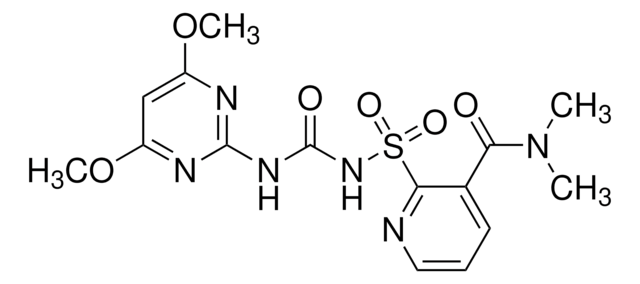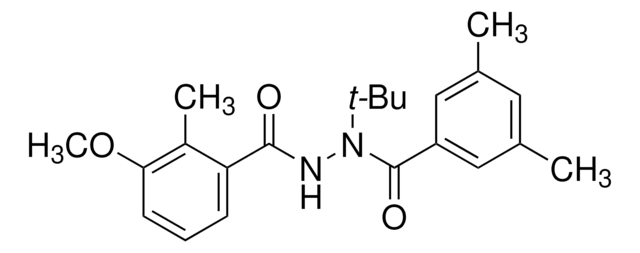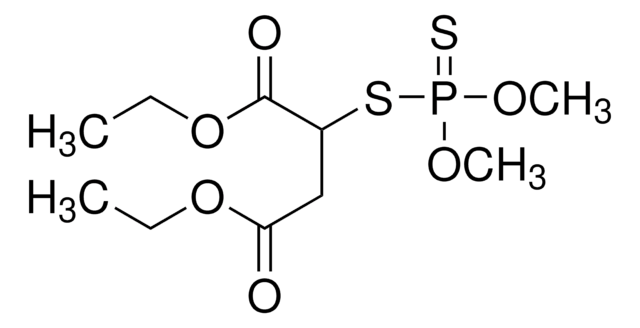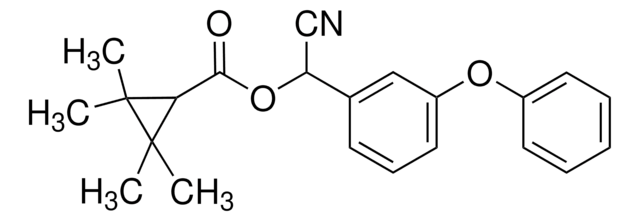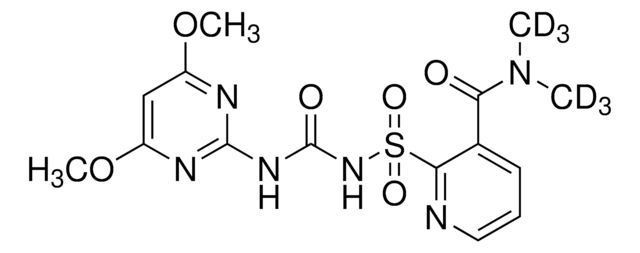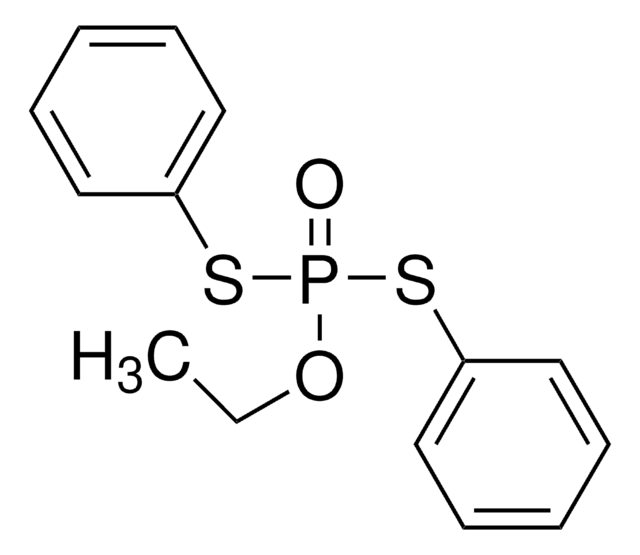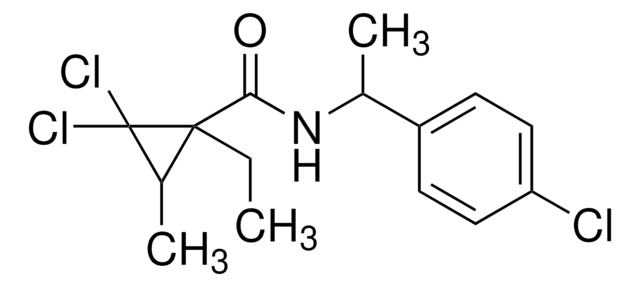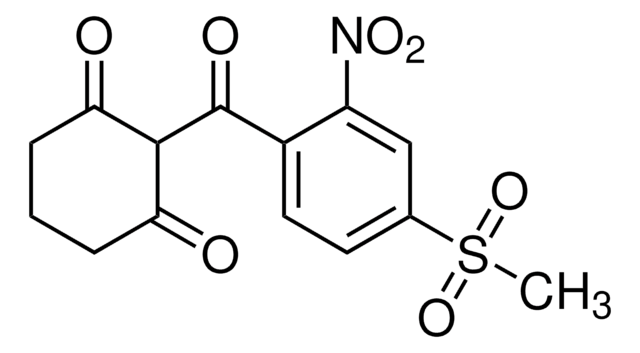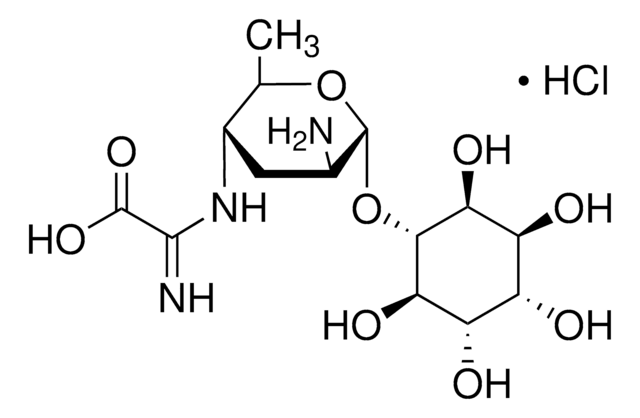06846
Chlorimuron ethyl
certified reference material, TraceCERT®, Manufactured by: Sigma-Aldrich Production GmbH, Switzerland
Synonym(s):
Ethyl 2-(4-chloro-6-methoxy-2-pyrimidinylcarbamoylsulfamoyl)benzoate
About This Item
Recommended Products
grade
certified reference material
TraceCERT®
Quality Level
product line
TraceCERT®
shelf life
limited shelf life, expiry date on the label
manufacturer/tradename
Manufactured by: Sigma-Aldrich Production GmbH, Switzerland
storage temp.
2-8°C
SMILES string
CCOC(=O)c1ccccc1S(=O)(=O)NC(=O)Nc2nc(Cl)cc(OC)n2
InChI
1S/C15H15ClN4O6S/c1-3-26-13(21)9-6-4-5-7-10(9)27(23,24)20-15(22)19-14-17-11(16)8-12(18-14)25-2/h4-8H,3H2,1-2H3,(H2,17,18,19,20,22)
InChI key
NSWAMPCUPHPTTC-UHFFFAOYSA-N
Looking for similar products? Visit Product Comparison Guide
Related Categories
General description
Certified content by quantitative NMR incl. uncertainty and expiry date are given on the certificate.
Download your certificate at: http://www.sigma aldrich.com
Chlorimuron-ethyl is a member of sulfonylurea herbicides used wildly for pre- and post-emergence control of broad-leaved weeds in soybeans, maize, peanuts, beans, and other crops. It is characterized by very low application rates, high herbicidal activity, good crop selectivity, and low toxicity.
Chlorimuron-ethyl is an acetolactate synthase (ALS) inhibitor, that acts by inhibiting the biosynthesis of the essential amino acids like valine, leucine, and isoleucine. This stops the plant growth as cell division of growing roots and shoots tips are inhibited.
Application
- To develop and validate an RP-HPLC method for the determination of metsulfuron-methyl, chlorantraniliprole, and chlorimuron-ethyl residues in stems of Oryza sativa
- To study the rate of biodegradation of chlorimuron-ethyl using Pseudomonas sp. LW3 in liquid culture and contaminated soil
- To investigate the toxicological effects of chlorimuron-ethyl, cadmium, and copper on germination rate and shoot and root elongation of wheat Triticum aestivum
- Study the effect of chlorimuron-ethyl on physiological mechanisms in wheat and identify valuable biochemical biomarkers for the pollution of chlorimuron-ethyl in soil-plant systems
- Study the biochemical responses to joint stress of chlorimuron-ethyl and cadmium in wheat Triticum aestivum
- To study the photolysis of chlorimuron-ethyl on a soil surface, under sunlight and UV light
- To determine the photodegradation kinetics of chlorimuron-ethyl in an aqueous solution under sunlight and UV light
Recommended products
Legal Information
signalword
Warning
hcodes
pcodes
Hazard Classifications
Aquatic Acute 1 - Aquatic Chronic 1
wgk_germany
WGK 3
flash_point_f
Not applicable
flash_point_c
Not applicable
Choose from one of the most recent versions:
Certificates of Analysis (COA)
Don't see the Right Version?
If you require a particular version, you can look up a specific certificate by the Lot or Batch number.
Already Own This Product?
Find documentation for the products that you have recently purchased in the Document Library.
Our team of scientists has experience in all areas of research including Life Science, Material Science, Chemical Synthesis, Chromatography, Analytical and many others.
Contact Technical Service